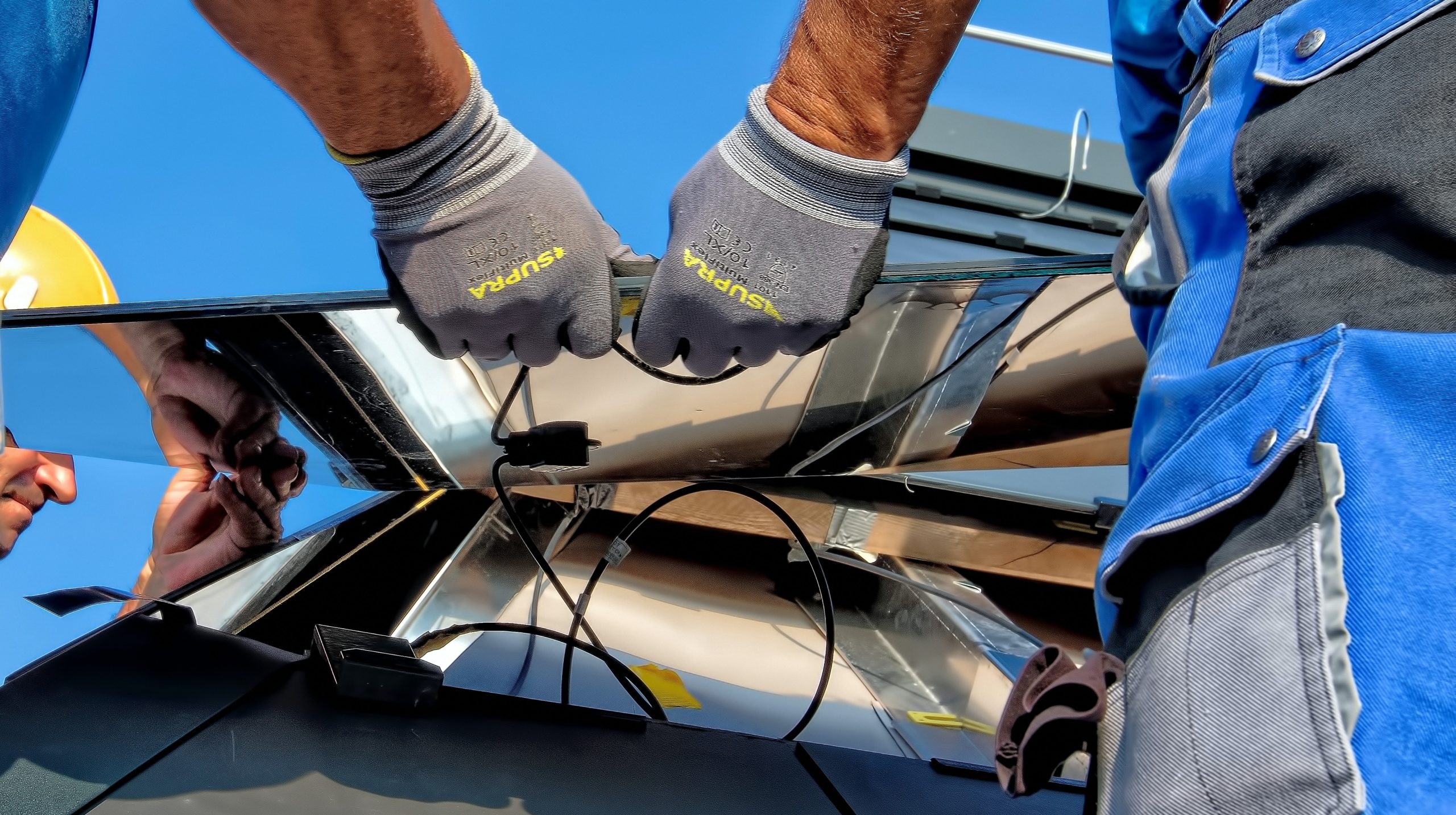What is the solution?
The solution is to buy items that are repairable and have them repaired, either internally or externally, by making sure that items can actually be repaired locally, e.g. by establishing service contracts with local repair shops.
This solution applies to items such as stoves, shelter material and lamps. A dedicated factsheet will cover the topic of buying used, repaired and remanufactured items.
What are the gains?
The reduction potential of buying repairable items – and repairing them – can be substantial. By prolonging the lifetime of items, emissions from raw material and the manufacturing process are avoided. For key items, it is recommended to perform a comparative life-cycle analysis, between the currently used product and a repairable option, to be able to take an informed decision.
In addition to a reduced carbon footprint, the solution offers a range of additional benefits, notably, addressing the growing (e-)waste problem. By using local repair services, the solution also supports local livelihoods and creates job opportunities.
Is it easy to implement?
Requesting suppliers that the item is repairable and that spare parts are made available for a certain period of time is relatively easy to implement.
Repairing items requires specific expertise, which makes internal repair within the organization often delicate. External repairs are generally easier.
To enable repair, sourcing teams must consider the repair phase of the item in contractual agreements. It will largely depend on the local context if the repair and remanufacturing of distributed non-food items, such as cooking stoves, tarpaulins and shelters, is easy to implement. By working with local suppliers, it is often easier to integrate repair services directly in the contract. Alternatively, buyers can work through service contracts to procure local repair services. A pilot with a key item in a location where a local repair shop already exists can be a good start.
It is important that the same levels of quality, safety standards and compliance with environmental regulation are maintained for repaired items. This should be part of the contractual agreements with suppliers or service providers.
Key implementation points
It is important that the same levels of quality, safety standards and compliance with environmental regulation are maintained for repaired items. This should be part of the contractual agreements with suppliers or service providers.
Focus on the repairability index
The repairability index is a tool developed and provided for by French anti-waste legislation since 2021 to help buyers and promote a circular economy.(1) It is displayed on certain electrical and electronic devices and provides consumers with more information about the repairability of their purchases, via a score out of 10. The products currently covered are: smartphones, laptops, televisions, lawnmowers, washing machines, vacuum cleaners, dishwashers and pressure washers.(2) By 2024, it will become the sustainability index, particularly due to the addition of new criteria such as product robustness and reliability. This repairability index is based on five main criteria:
This repairability index is based on five main criteria:
- Availability of documentation
- Disassembly, access and tools
- Availability of spare parts
- Price of spare parts
- Crtieria specific to the category of equipment concerned

Key actions
-
#1 Identify suitable products
Identify for which products repairable options exist.
-
#2 Set a goal
Set an ambitious goal for items to be repaired.
-
#3 Add contract clauses
Add contract clauses requiring products to be durable, easy to disassemble and to repair, as well as ensuring availability of spare sparts for a certain amount of time.
-
#4 Make sure repairing is possible
Request suppliers to provide a repair manual and a list of spare parts.
-
#5 Check local repair capacity
Ensure local repair capacity is available, either through the supplier, through local businesses or a local service provider.
-
#6 Collect un-repairable items
Require suppliers to take back items or organise the local re-collection of items that are damaged or not repairable anymore.
To consider
-
Potential co-benefits
- Reducing resource use
- Creating local business and employment opportunities
-
Success conditions
- Local repair capabilities available or put in place
-
Prerequisites & specificities
- Items need to be durable and designed to allow for repair (include this in the contract)
-
Potential risks
- Potential costs for repair
Point of attention
-
Point of attention
Transportation logistics can have a major impact on the net benefits of repair (up to 20% for the laptop example).(5)
Rather than focus on absent or non-existent recycling facilities, we argue that sustainable pathways to energy access in Sub-Saharan Africa hinge on the willingness of the solar industry to acknowledge and engage with an existent, vibrant and diverse repair economy.
Jamie Cross, Declan Murray, The afterlives of solar power, 2018 (11)
Tools and good practices
-
The Repairability Index, 2021, (FR)
The state of repairability around the world.
Explore here -
Ellen MacArthur Foundation: Circular Economy Procurement Framework
The circular procurement framework provides an overview of the intervention points organisations can use to make their purchasing choices more circular and engage their suppliers in circular economy conversations and collaborative circular partnerships.
Explore here -
GOGLA, E-waste Toolkit Module 2 Briefing Note, Design for Reduction of Waste
The briefing note identifies strategies and tools to reduce waste in the off-grid solar sector, including: Circular business model strategy games & KPIs, waste hierarchy, off-grid solar scorecard, indicators for recyclability, repairability and spare parts, design for sustainability framework
Explore here -
Solvoz Foundation, Service contract: repair shop for solar lanterns, including further guidance
Solvoz Foundation, Service contract: repair shop for solar lanterns, including further guidance
Explore here
To go further
-
Ellen MacArthur Foundation, Completing the Picture. How the Circular Economy tackles Climate Change, 2021
A report that outlines how the circular economy has a major role to play in meeting climate targets. It provides a wealth of facts and figures.
Explore here -
European Union, European Circular Economy Stakeholder Platform
A platform on the circular economy with information on financing opportunities, good practices and tools.
Explore here -
Jamie Cross, Declan Murray, The afterlives of solar power: Waste and repair off the grid in Kenya, Energy Research & Social Science, 2018
A research paper that explores the issue of end-of-life treatment of solar waste in Sub Saharan Africa from a socio-cultural perspective and makes the case for implementing re-use and repair solutions.
Explore here
Featured
Procurement

Non-food items

Procurement criteria

Sources
(1) Ministère de l’Aménagement du territoire et de la décentralisation, ‘Indice de réparabilité’, Ministère de l’Aménagement du territoire et de la décentralisation, 2025, Available here, (accessed 10 September 2025).
(2) L’indice de réparabilité, ‘Appareils’, L’indice de réparabilité, Available here, (accessed 10 September 2025).
(3) Lighting Global, ‘Off-Grid Solar: Market Trends Report 2020’, Lighting Global, 2020, Available here, (accessed 10 September 2025).
(4) Cross, J., and Murray, C., ‘The afterlives of solar power: Waste and repair off the grid in Kenya’, Energy Research & Social Science, 2018, Available here, (accessed 10 September 2025).
(5) Oakdene Hollins, ‘Executive Summary: An assessment of the greenhouse gas emissions and waste impacts from improving the repairability of Microsoft devices’, Oakdene Hollins, 2022, Available here, (accessed 10 September 2025).
(6) The Climate Action Accelerator, ‘2025 Summary presentation LCA results’, The Climate Action Accelerator, 2025, Available here.
(7) IOM, ‘Uganda’s Largest Refugee Settlement Set to Benefit from IOM’s Electronic Waste Management Project’, IOM, 2022, Available here, (accessed 10 September 2025).
(8) The University of Edinburgh, ‘Tackling the climate and environmental crisis’, The University of Edinburgh, Available here, (accessed 10 September 2025).
(9) UNHCR, ‘Operational Strategy for Climate Resilience and Environmental Sustainability 2022’, UNHCR, 2021, Available here, (accessed 10 September 2025).
(10) Solvoz, ‘Procure with the Solvoz end-to-end workflow’, Solvoz, Available here, (accessed 10 September 2025).
(11) Zero Waste Scotland, ‘Procuring for: Repair, Re-use and Remanufacturing’, Eunomia, 2016, Available here, (accessed 10 September 2025).
Acknowledgements
Last updated 24th of October 2025.
Share your success stories, suggestions, and comments with us! contact@climateactionaccelerator.org
Cover photo © Clint Bustrillos/Unsplash.
